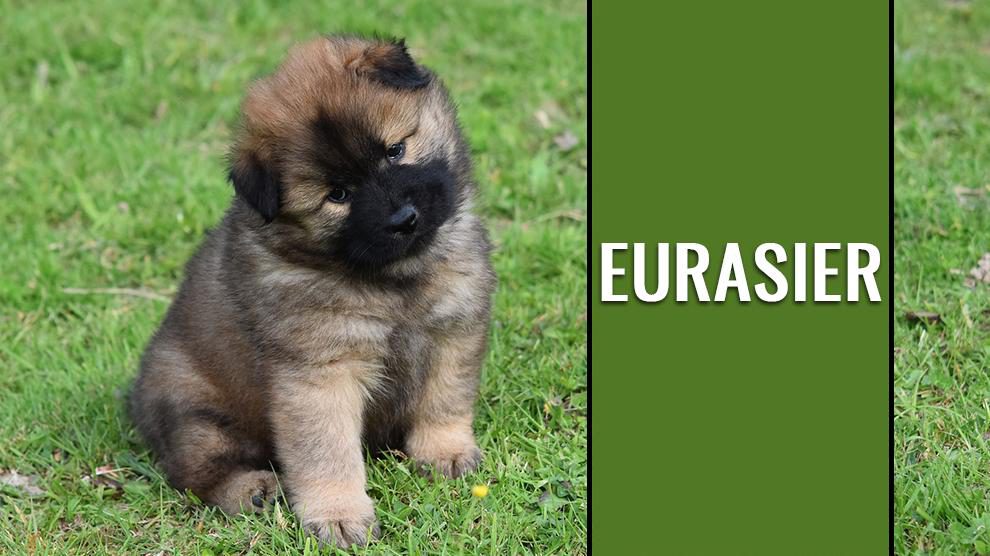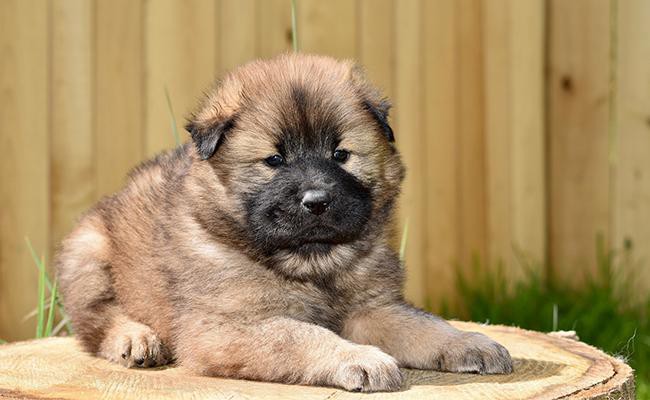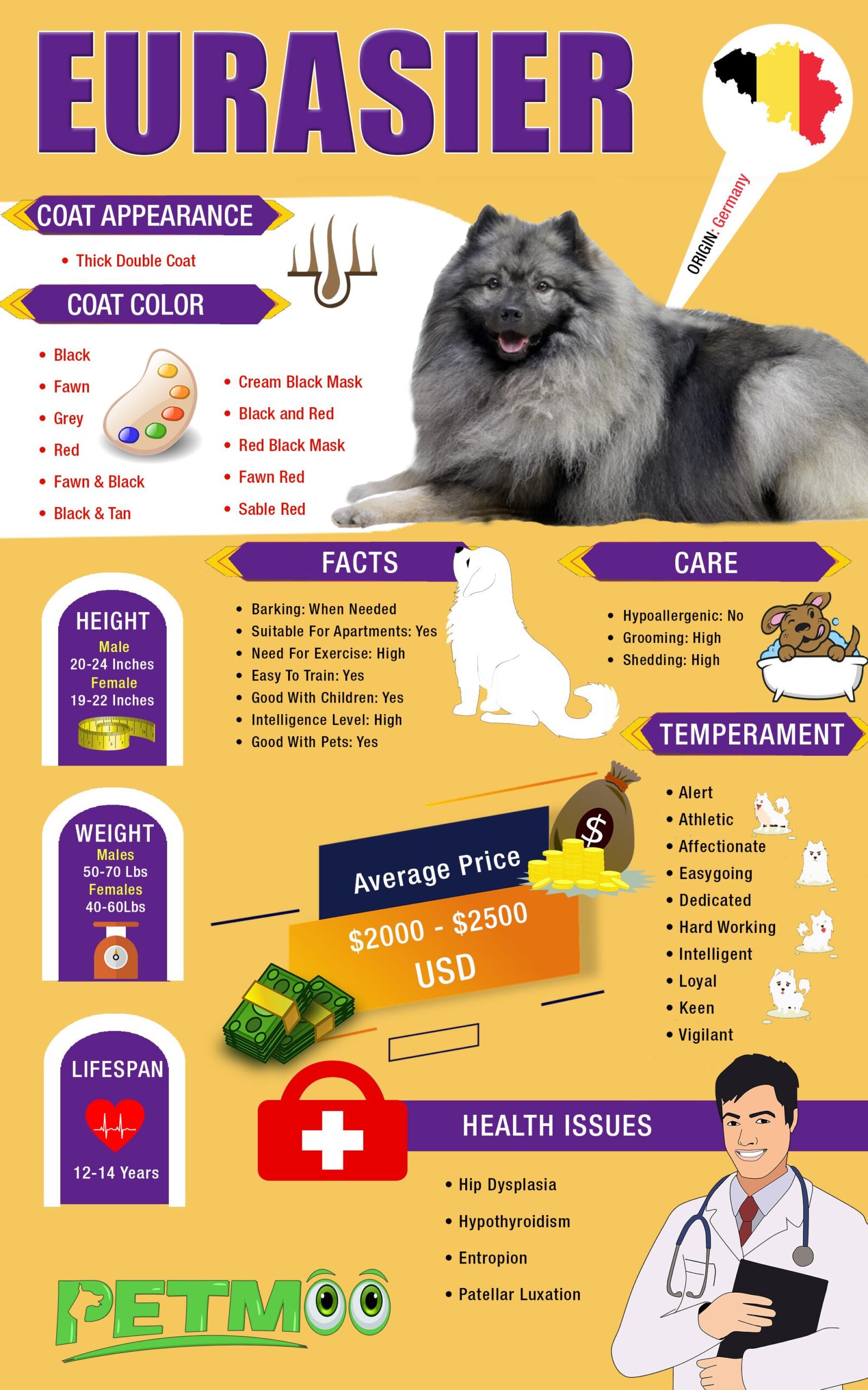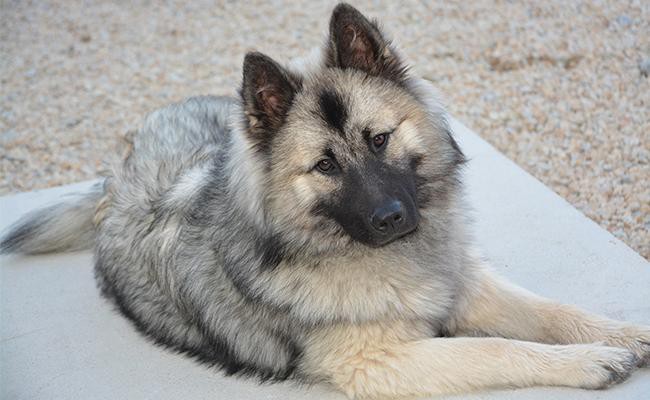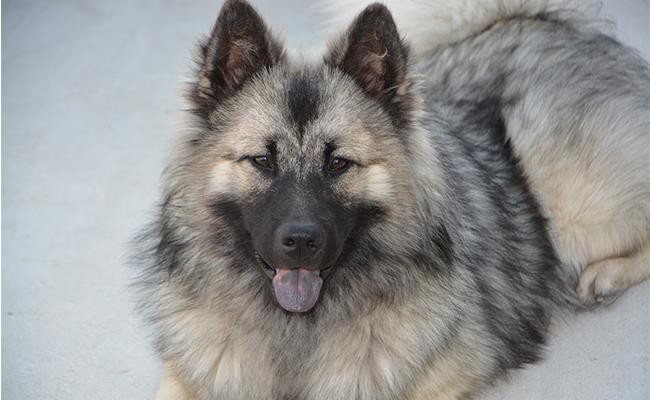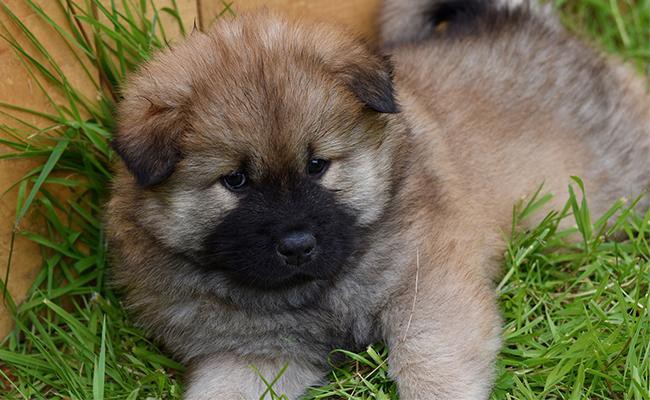Dog Pregnancy Calculator And Timeline
Eurasier or Eurasian Dog is a medium-sized Spitz-type dog breed developed in Germany and they are often mistaken as a cross between Keeshond and Chow Chow.
While the physical description of Eurasier can be compared those mixes and, indeed, the two dogs would be genetically similar. However, such a mix cannot be appropriately classified as a Eurasier.
There are many unscrupulous breeders who make such crosses and pass them off as Eurasiers to unwary buyers. So, for those who are thinking about bringing home this breed, take the time to learn about this breed so you are sure to get the right dog.
Now, you perhaps ask yourself, what is Asian in the Eurasian dog? Well, this dog is actually a product of a cross between the Chow Chow and Samoyed – the two Asian breeds, and one European breed known as Wolfspitz (female), which is a variant of the German Spitz.
The name was preferred to indicate the breed’s Asian and European background. The Eurasian is relatively a newcomer and originated recently in the 1960s, so it is one of the youngest primitive dog breeds.
Julius Wipfel developed this breed mostly as a “restructured” version of Russian Laika, which is principally used as a sled dog. In fact, that was the anticipated job for this Spitz too.
However, he didn’t justify a ‘working dog’ role, fortunately, he proved his worth as an excellent human companion.
Eurasier Dog belongs to the class of primitive dogs in the ‘Asian Spitz and Related Breeds group’.
They are recognized by the Federation Cynologique Internationale, Canadian Kennel Club and VDH-Verband fuer das Deutsche Hundewesen” (The German Kennel Club) although still to be recognized by American Kennel Club.
Eurasier Breed Characteristics Sheet
- Origin: Germany
- Size: Small
- Dog Breed Group: FSS(AKC), Group 5 (FCI), Group 3( CKC), Northern Breed( UKC)
- Purebred: Yes
- Lifespan: 12-14 Years
- Height: Male:20-24 Inches (52 – 60 Cm), Female: 19-22 Inches (48 – 56 Cm)
- Weight: Males: 23 – 32 Kg (50-70 Lbs) And Females: 20 – 26 Kg (40-60 Lbs)
- Coat Appearance: Thick Double Coat
- Coat Colors: Black, Black & Tan, Cream Black Mask, Fawn, Fawn & Black, Grey, Red, Black and Red, Red Black Mask, Fawn Red, Sable Red
- Temperament: Alert, Athletic, Affectionate, Easygoing, Dedicated, Hard Working, Intelligent, Loyal, Keen, Vigilant
- Good With Children: Yes
- Intelligence Level: High
- Good With Pets: Yes
- Hypoallergenic: No
- Grooming: High
- Shedding: High
- Barking: When Needed
- Suitable For Apartments: Yes
- Need For Exercise: High
- Easy To Train: Yes
- Good For First Time Owners: Yes
- Health Issues: Hip Dysplasia, Hypothyroidism, Entropion, Patellar Luxation
- Litter Size: 4- 6 Puppies
- Average Price: $ 800 – $1000 Usd (USA), £1,200 For Kc Registered Dogs, £700 For Non-Kc Registered Dogs
Eurasier History
The history of the Eurasier begins in Germany in the 1960s when German breeder Julius Wipfel along with Charlotte Baldamus and a group of other dog enthusiasts set out to extract the best traits of the Wolf Spitz (which in some countries are considered the same breed as the Keeshond) and Chow Chow, incorporating them in creating a breed of a new variety.
Julius Wipfel looked for the “primitivity” that would also show the adaptability of wolf and would be a wonderful family dog – so he decided to create a breed with that goal in mind.
Initially, the mix was referred to as the Wolf Chow – a combination of the name of both its parents and its name was changed to Eurasier with the introduction of the Siberian breed Samoyed into the breeding process.
The new bloodline Samyod was introduced to reduce the problems that occurred due to the high proportion of inbreeding.
The FCI gave recognition to Eurasiers in 1973 and the Canadian Kennel Club recognized them in the category of Group 3 Working dog in the year 1995.
Eurasier Coat Color And Appearance
- Black
- Black & Tan
- Cream Black Mask
- Fawn
- Fawn & Black
- Grey
- Red
- Black and Red
- Red Black Mask
- Fawn Red
- Sable Red
- Sable
Eurasier Appearance
Eurasian is a medium-sized well constructed, a balanced dog of Spitz type that has inherited many of their parent breed traits.
They boast having the wedge-shaped head and the striking almond-shaped eyes of the Spitz matching the delightful, gentle and friendly nature of both parent breeds.
It has a distinct frontal furrow and together with a well-defined occiput (back of their heads), it adds to their quite attractive looks. They have a barely defined stop and ‘neither too coarse, not too pointed’ muzzles that taper gently towards the nose leather.
Dark, medium-sized eyes that are not too protruding or deep-set. Their eyes have a slightly slanting Orbital aperture with black pigmentation on the eye rims.
They have triangular, prick ears that are well set apart on their head adding to their watchful look. They have a strong jaw with a scissor or even bite.
Their neck is moderately long and well-muscled with nicely sloping shoulders, well-defined withers, straight backs, and level croups.
The dogs boast an oval-shaped ribcage that reaches down to their elbows with well-developed forecasts which add to a dog’s athletic appearance.
The high set tails are round with a good amount of width, but this taper to the tip. When alert, the Dogs carry their tails curled over their backs while some dogs hold their tail forward and to one side.
Eurasier Size And Lifespan
- Height: Male:20-24 inches (52 – 60 cm), female: 19-22 inches (48 – 56 cm)
- Weight: Males: 23 – 32 kg (50-70 lbs) and Females: 20 – 26 Kg (40-60 lbs)
Eurasier Lifespan
The average dog life-span is about 12-14 years sometimes as long as up to 15 years old when properly cared for and fed a good quality diet to suit their ages.
Eurasier Temperament
Primarily a one-family dog, he is a good-natured but is devoted, gentle and patient without being overly demonstrative.
They are gentle with kids and other animals, wanting only to take care of them. These dogs are not lapdogs or submissive creatures, clinging to your heels all the time and constantly looking for instruction, but they are inquisitive.
They are strong-minded, and they bond naturally to those who care for them. They are not “good backyard dogs.”
It’s not surprising that they exhibit excellent qualities of all the parent breeds, considering the fact that the Eurasier was bred specifically for temperament.
Keeshonds and chow chows are fun-loving, loyal, even-tempered family-favorite dogs, Eurasiers are no different, and they are also well-mannered fun-loving fluffy pooches.
It’s more of a laid-back and friendly dog that loves being around people. In general, your Eurasier will be smart and intelligent while thrives on interacting with its owner, household family members and generally all the people it loves.
Eurasiers make excellent watchdogs and they’re naturally protective, but not usually aggressive towards strangers and barks only when necessary.
Eurasiers are easy-going, obedient who will fit right in as one of the family as playmates, snuggle buddies and loyal companions.
They’re non-aggressive but make good-natured watchdogs and will happily hunker down at the end of the day, as your own foot warmer for family movie night.
5 Ways A Eurasier Can Change Your Life?
- Your kids will never get bored
- Your sleeping would get better
- They aren’t like labs and guzzle everything so you would become short order dog chef
- You get a lot more attention outdoors with your dog
- You would never want another breed after you got a Eurasier
Who Gets Along With Eurasiers?
- Those who seek a good guard dog that will also be affectionate with the family
- Family with kids
- Active as well as laidback households
- Apartment dwellers, seniors
- Houses in farms and country homes
Eurasier Food
Best Dry Dog Food
- Hill’s Science Diet Large Breed Puppy Food
- Nutro Wholesome Essentials Large Breed Puppy
- Wellness Complete Health Natural Dry Large Breed Puppy Food.
Best Wet Dog Foods
- Merrick Classic Grain Free Canned Dog Food Puppy Plate
- Whole Earth Farms Grain Free Canned Dog Food Puppy Recipe
- CANIDAE Grain Free PURE Dog Wet Food for Puppies
Best Food For Puppies
- Wellness Complete Health Small Breed Puppy
- BLUE Life Protection Formula Puppy Small Breed Chicken and Oatmeal Dry Dog Food
- Diamond Naturals Small Breed Puppy Real Meat Recipe Natural Dry Dog Food
- Bil Jac Small Breed Puppy Dry Dog Food
- Tuffy’s NutriSource Chicken and Rice Formula Breed Dry Puppy Food
Best Food For Puppies With Allergies
- BLUE Wilderness High Protein Grain Free Puppy Dry Dog Food
- Instinct Raw Boost Grain Free Recipe Natural Dry Dog Food Large Breed Puppy
- Holistic Select Natural Dry Dog Food Large & Giant Breed Puppy
Eurasier Training
- Since the parent breeds are easy going and loving, the Eurasier is pleasant, playful and placid. It’s highly recommended that your pet should be exposed to all kinds of noises, situations, people and other dogs as possible so as to make sure they get a friendly dog once their pup reaches adulthood.
- Eurasier is both friendly and extrovert dogs, they can be easily distracted and bored, so keeping the training interesting is important. When done with good attitude and patience, the results of training these dogs can be truly rewarding.
- Taking your dog everywhere with you, visiting all your dog friends and getting your dog used to being around other dogs will ensure that you won’t have a shy or scared dog. Enrolling in a puppy obedience class is particularly beneficial in this early socialization.
- Try fetching games with your pup using a stick, ball, soft toys or Frisbee –anything to get your pet to chase the object and bring it back to you– is a great exercise and teaches your dog to come to you.
What About For First Time Owners?
They are a good choice for first-time dog owners because they are very eager to please and respond well to positive reinforcement techniques.
This relatively unknown breed’s loyalty, intelligence, and outgoing nature make training easy, so considering this – Eurasiers make good pets for novice owners.
Though, training should be consistent and make sure to probe into the breed’s outlook comprehensively before adopting one.
Who Gets Along With Eurasier?
- Those who seek a good guard dog that will also be affectionate with the family
- Family with kids
- Active as well as laidback households
- Apartment dwellers
- Houses in farms and country homes
Eurasier Shedding And Grooming
It has a luxurious double coat – harsh, straight waterproof outer coat and its inner coat is very soft and dense.
Eurasiers have thicker hair in their legs, the backs of their thighs and tail. They have a profuse ruff of thicker fur around their necks but not so much that the dog to consider it like a mane.
They shed moderately year-round and particularly their undercoat during the shedding seasons over a period of about 2-3 weeks during spring and fall season.
Daily brushing will help keep hair under control during shedding seasons.
You have to ensure to take care of their coats as much as necessary. This means that you need to brush their coat on a regular basis to trap loose fur before it sheds.
Make grooming your dog as a part of your regular routine and make sure to use a brush that can reach inside layers of the coat.
Bathing can also help eliminate excessive shedding. Keep him away from dirty patches, brush with a pin brush to keep his coat shiny, healthy and tangle-free.
Eurasier Care
Using a comb with wide teething and a soft pin-brush, regularly brush and comb to keep the coat clean and tangle-free.
Ears should be regularly examined and cared for once a week. With specially designed tweezers, Hairs growing in the ear canal should be pulled out.
Check for any accumulation of dirt and earwax, which easily leads to an ear infection or other fussy problems.
It is easy to clean the outer part of the ear with a cotton disc lightly soaked in with cleansing milk or other products used for ear-cleaning.
Their nails are fast-growing which should be regularly trimmed to prevent splitting and cracking. Also, clean their teeth routinely.
Regular bathing is not required, only bathe as-needed. Or, a quick wipe-down with a damp cloth will be sufficient for cleanup after a day in the outdoors.
This quick cheat sheet would make your life a little easier!
- Brushing weekly ( 2 or3 times)
- Trimming/Clipping Every 2 months
- Clean Ears Every two to four weeks
- Brush Teeth weekly twice
- Nail trimming Weekly
- Bathing – When required
Eurasier Puppies Names
Eurasier Male Puppy Names
- Baret
- Benz
- Caspar
- Decker
- Felix
- Einar
- Frans
- Leon
- Raine
- Steffen
Eurasier Female Puppy Names
- Amara
- Edie
- Ember
- Hanna
- Jinx
- Matty
- Natasha
- Roxy
- Stacy
- Rachel
Eurasier Health Problems
Major concerns
Hip Dysplasia:
Hip dysplasia is one of the most common skeletal disorders characterized by the incongruity between surfaces of the acetabulum (the pelvis’s hip socket) and head of the femur (the ball portion of the femur).
The key signs are limping, stiffness, loss of muscle mass in one or both thighs and lameness of hind limbs.
The difficulty with hip dysplasia is that it’s not always noticeable as its severity is unpredictable due to the way this disease is inherited. Most of the pets will show signs as early as 6 months old, while others shock us with symptoms that appear only later in their life.
Hypothyroidism:
Canine hypothyroidism is the most common endocrine disease of dogs.
This happens either because of autoimmune-related destruction of the thyroid gland known as lymphocytic thyroiditis which results in a progressive deficiency of thyroid hormone or, rarely, because of a congenital disease process (one that’s present from birth).
Hypothyroidism is most frequently diagnosed in middle-aged to senior dogs, between the ages of 4 and 10 years. The Signs of hypothyroidism in dogs can include Weight gain, a dull coat, slow heart rate, and sluggishness.
Entropion:
Entropion is a common disease of the eyelids in which the lower or upper lids inverted i.e. it is folded or rolled inwards.
This abnormal conformation of the eyelids is considered an undesirable inherited trait as it typically leads to corneal ulceration or perforation as a result of scratches caused by an eyelash and other eyelid hair impingement on the cornea.
This can be a primary inherited condition and some breeds of dogs are genetically predisposed.
It is especially prevalent in brachycephalic breeds due to their pushed-in facial structure. Entropion can also be a secondary condition caused by an eye infection (like conjunctivitis), eyelid scarring, corneal spasms, nerve damage, and trauma.
Minor concerns
Patellar luxation:
Patellar luxation, also called Luxating patella is one of the most common hind limb orthopedic pathologies seen in dogs.
Luxating patella simply means that the kneecap (patella) luxates from its normal anatomic position in the distal femoral patellar surface or the trochlear groove of the femur (thigh bone) and it is no longer able to return to its normal position.
This patella can luxate or displace, medially or laterally. This may lead to osteoarthritis and presents varying degrees of lameness.
This may also predispose the dog to even more severe degenerative changes.
The common causes of patellar luxation include tibial deformity, bowing of the distal femur, femoral epiphyseal dysplasia, atrophy of the quadriceps, rotational instability of the stifle joint, shallow trochlear groove with hypoplastic or missing trochlear ridges and hip dysplasia.
Eurasier Price
The price of puppies will be $800- $ 1000 from a reputable breeder. Keep in mind that there are also vaccines, licenses, preventative medicine, heartworm testing and – if needed – spaying or neutering. Just add extra $500 to the actual price.

